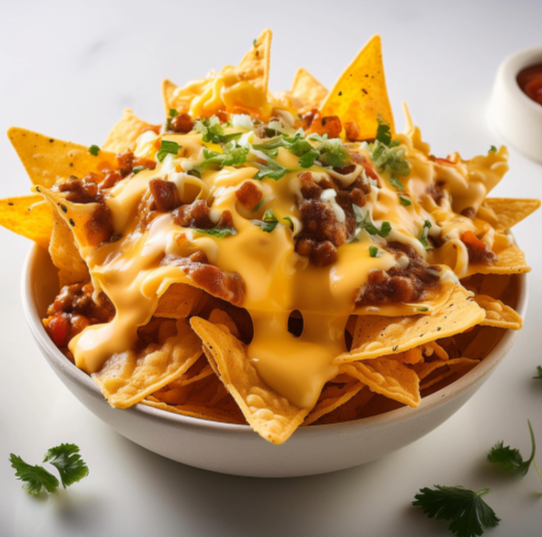
Imagine a plate of steaming hot Chicken Pad Thai in front of you. With its vibrant mix of colors, tantalizing aromas, and a perfect blend of sweet, sour, salty, and spicy flavors, it’s no wonder this dish is a favorite for many. Chicken Pad Thai is more than just a meal; it’s an experience—one that brings together textures and tastes in a delightful harmony. Whether you’re a seasoned home cook or a kitchen novice, this blog will guide you through everything you need to know to create an authentic Chicken Pad Thai at home.
In this blog post, we’ll explore the rich history of Pad Thai, its health benefits, and provide a comprehensive step-by-step guide to making your own delicious version. We’ll also discuss how you can customize the recipe to suit your dietary preferences or flavor profile, and share some tips on serving and storing leftovers.
The Rich History of Pad Thai
Pad Thai is more than just a popular street food; it is a dish with a storied past that has become a symbol of Thai cuisine. Originating during World War II, Pad Thai was part of a national campaign to reduce rice consumption in Thailand. The government promoted this noodle dish as a way to conserve rice, and it quickly became a national favorite.
Pad Thai is traditionally made with stir-fried rice noodles, eggs, tofu, and a combination of shrimp or chicken, garnished with peanuts and lime. Its cultural significance can’t be overstated, as it brings together influences from Chinese and Thai culinary traditions. The dish’s unique flavor profile—balancing sweetness from tamarind paste, saltiness from fish sauce, sourness from lime, and spiciness from chili—represents the complexity and depth of Thai cuisine.
Health Benefits of Key Ingredients
Chicken Pad Thai isn’t just delicious; it’s packed with ingredients that offer numerous health benefits. Here’s a closer look at some of the key components:
Chicken
Chicken is a great source of lean protein, essential for muscle repair and growth. It’s also rich in vitamins and minerals such as B6, niacin, phosphorus, and selenium, which are vital for maintaining energy levels and supporting overall bodily functions.
Rice Noodles
Rice noodles are gluten-free and easy to digest, making them a suitable option for those with gluten sensitivities. They provide a good source of carbohydrates, which are crucial for providing energy.
Vegetables
Pad Thai often includes a variety of vegetables like bean sprouts, carrots, and green onions. These veggies add not only crunch and color but also essential vitamins and antioxidants that promote good health. Bean sprouts, for example, are rich in vitamin C and fiber, while carrots provide beta-carotene, which is good for eye health.
Step-by-Step Guide to Making Authentic Chicken Pad Thai
Ready to make your own Chicken Pad Thai at home? Follow these steps for an authentic taste experience:

Ingredient Selection
Choosing the right ingredients is crucial for making authentic Chicken Pad Thai. Look for fresh rice noodles in the Asian section of your grocery store, or opt for dried ones if fresh are unavailable. For sauces, you’ll need tamarind paste, fish sauce, and soy sauce. Fresh vegetables like bean sprouts, green onions, and carrots add crunch and color.
Preparation
- Noodles: If you’re using dried rice noodles, soak them in warm water for about 20-30 minutes until they’re soft but still firm. Drain and set aside.
- Chicken: Slice chicken breasts into thin strips. Season lightly with salt and pepper.
- Vegetables: Julienne the carrots and chop the green onions.
Cooking
- Cook the Chicken: Heat oil in a large wok or skillet over medium-high heat. Add the chicken and cook until it’s no longer pink. Remove and set aside.
- Stir-Fry the Noodles: In the same pan, add a bit more oil, then add the soaked noodles. Stir-fry for a few minutes.
- Add the Sauce: Combine tamarind paste, fish sauce, soy sauce, and a bit of sugar in a bowl, then pour over the noodles. Toss to coat evenly.
- Combine Everything: Add back the cooked chicken, along with the vegetables. Stir-fry everything together for another few minutes until well mixed.
- Garnish and Serve: Serve your Pad Thai hot, garnished with chopped peanuts, a squeeze of lime, and a sprinkle of fresh cilantro.
Classic Chicken Pad Thai Recipe
Ingredients:
- 200g (7 oz) dried rice noodles
- 2 tbsp vegetable oil
- 300g (10.5 oz) boneless, skinless chicken breasts, sliced thinly
- 2 cloves garlic, minced
- 2 eggs, lightly beaten
- 1 cup bean sprouts
- 1 carrot, julienned
- 3 green onions, chopped
- 1/4 cup roasted peanuts, chopped
- 2 tbsp tamarind paste
- 3 tbsp fish sauce
- 2 tbsp soy sauce
- 1 tbsp sugar
- 1 red chili, diced (optional)
- 1 lime, cut into wedges
- Fresh cilantro, chopped (for garnish)
Instructions:
Prepare the Noodles:
- Soak the dried rice noodles in warm water for about 20-30 minutes until they are soft but still firm. Drain and set aside.
Cook the Chicken:
- Heat 1 tablespoon of vegetable oil in a large wok or skillet over medium-high heat. Add the sliced chicken and cook until it is no longer pink. Remove and set aside.
Make the Sauce:
- In a small bowl, mix tamarind paste, fish sauce, soy sauce, and sugar. Adjust the taste according to your preference.
Stir-Fry the Noodles:
- In the same wok or skillet, add the remaining oil. Add the minced garlic and stir-fry for about 30 seconds until it is fragrant.
- Add the soaked noodles and stir-fry for 2-3 minutes. Push the noodles to one side of the wok.
Cook the Eggs:
- Pour the beaten eggs into the empty side of the wok. Scramble until they are just set, then mix with the noodles.
Combine Ingredients:
- Add the cooked chicken back into the wok along with the bean sprouts, julienned carrot, and chopped green onions. Pour the sauce over everything and toss well to combine. If using, add the diced red chili.
Garnish and Serve:
- Transfer the cooked Pad Thai to plates. Garnish with chopped roasted peanuts, lime wedges, and fresh cilantro. Serve hot and enjoy your homemade Chicken Pad Thai!
Variations and Customization Options
One of the best things about Chicken Pad Thai is its versatility. Here are some ideas to customize your dish:
Dietary Preferences
- Vegetarian/Vegan: Substitute tofu for chicken and use soy sauce instead of fish sauce.
- Low Carb: Use spiralized zucchini or shirataki noodles in place of rice noodles.
Flavor Profiles
- Spiciness: Adjust the level of chili to match your heat tolerance.
- Sweetness: Add more or less sugar depending on your preference for sweetness.
Serving Suggestions and Storing Leftover Pad Thai
Chicken Pad Thai is best enjoyed fresh, but it can also be reheated for later meals. Here’s how to make the most of your leftovers:
Serving Suggestions
Pair your Chicken Pad Thai with a light side salad to keep the meal balanced. A simple green salad with a tangy vinaigrette complements the rich flavors of the Pad Thai perfectly.
Storing Leftovers
If you have leftovers, store them in an airtight container in the refrigerator for up to three days. When reheating, it’s best to do so in a skillet with a little bit of oil to help revive the noodles’ texture.
Conclusion
Chicken Pad Thai is more than just a meal; it’s an adventure in flavors and textures that brings a taste of Thailand into your home. By understanding its history, appreciating its health benefits, and following a step-by-step guide, you can create an authentic and delicious dish that will impress family and friends.
Don’t be afraid to experiment with variations and make the recipe your own. We would love to hear about your Pad Thai creations and experiences. Share your stories and photos with us!
Happy cooking!






